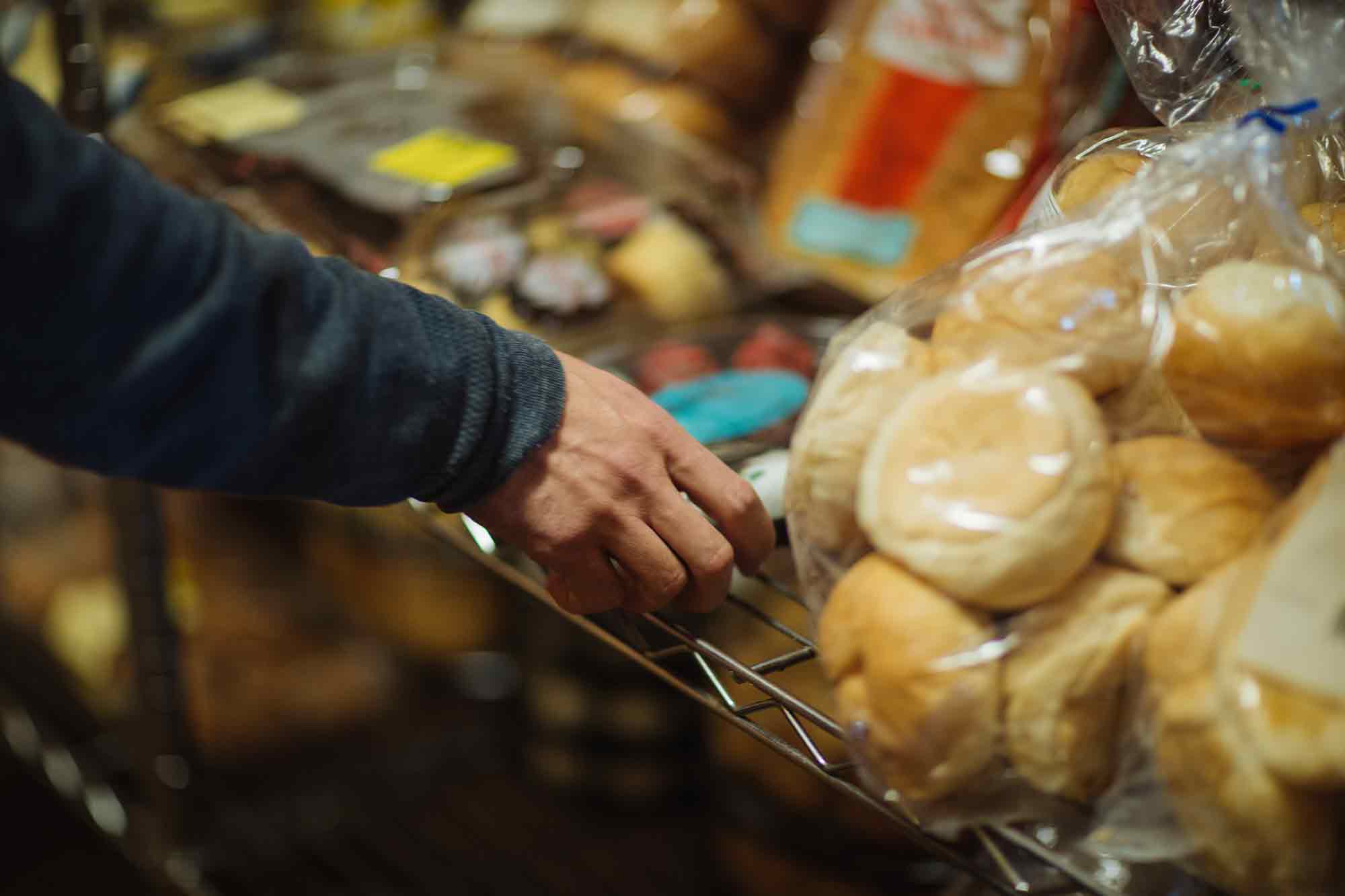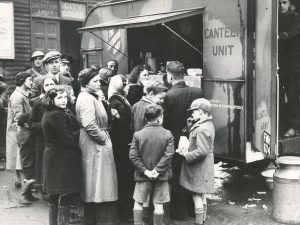Before the COVID-19 pandemic, The Salvation Army Bellingham (Washington) food bank was serving approximately 200 people a month. Then, with the coronavirus, that number grew to about 1,200. Due to the uptick, the food bank moved to a 15,000-square-foot facility—formerly a Salvation Army thrift store—in 2020. And today, the program serves around 8,000 people a month.
The Salvation Army Bellingham Corps is open three days a week and operates like a grocery store. Clients check in, get a shopping cart and browse to get the things they need—as they would in a typical supermarket. It’s one of a number of client choice food pantries The Salvation Army operates in the Pacific Northwest.
“Our goal in all of our programs, but also in our shelters and food pantries, is to get to the point where every corps community center is able to meet the highest standard of care for every individual,” said Northwest Divisional Commander Lt. Colonel Cindy Foley. “The way in which we provide a personal choice experience in meeting nutrition needs in a quality manner demonstrates our care for them, and caring for people in that manner goes beyond language.”
The program in Bellingham fills a key need for community members as they don’t have a nearby grocery store to access healthy, affordable foods in their area.
Among the pantry’s client base are about 500 members of the area’s large Slavic population—many of whom are Ukrainian refugees. More than 6,500 Ukrainian refugees have moved to communities across Washington since 2010, including more than 120 people who arrived after October 2021.
To find out more, Caring Magazine spoke with Salvation Army Bellingham Corps Officer Lieutenant Chase Tomberlin-Green—who shared how the food bank has evolved since opening at its new location and how it continues to make a lasting impact in the community.
Caring Magazine (CM): How has The Salvation Army Bellingham food pantry program evolved since reopening at the former thrift store facility in 2020?
Lieutenant Chase Tomberlin-Green (CT): It’s really important to remember that in the neighborhood that we’re in, there is no grocery store within easy walking distance. We are the food provider for our neighborhood. It’s grown just out of necessity. People need it.
We live in a community where we have a very high population of people experiencing homelessness and a very high low-income family population. Our average family is a family of three-plus children and then we also have a very high Ukrainian refugee population. The food bank has become a safe haven—a safety net for families and individuals alike.
CM: Can you tell us more about how the food pantry is serving the area’s Slavic population?
CT: We’ve always had a pretty steady clientele of Ukrainian and Russian individuals and families who have utilized the food bank. In recent months, we’ve definitely seen an uptick. We’ve also seen a lot of fear though with people just being afraid to get out into the community and ask for help. A lot of our clients who have been using us for years will bring people to the food bank to help translate for them.
We have a Slavic church in our area that helps provide translators. It makes people who have fled Ukraine feel much more welcome and helps them feel safe—they’re already dealing with so much. Having this available for refugees is not just important on the basis of food, but it’s a way for our community to say, “Hey we’re here for you, we love you, and we want to support you. Don’t be afraid. This is a safe place for you.” If a Ukrainian individual can find a safe haven in The Salvation Army, then we’ve done our job. That’s what we’re all about. That’s what we want to do for everyone.
CM: What kind of impact is the program having on the community?
CT: It’s become that safe haven for families, but I think it’s become even more than that—it’s empowering. The act of someone being able to go in, grab a shopping cart, and shop just like normal, makes them feel much better. There’s always so much embarrassment and shame about someone coming in and asking for a box full of food. But they don’t feel that when they come to The Salvation Army because we’re able just to make them feel like it’s a normal place to shop for their food. And so it’s been really empowering for our community and we see a lot of positivity in people’s moods and attitudes.
It also acts as that bridge for our other Salvation Army programs. When we have families who come in with their children for food, we say, “During Christmas, if you’re still in need, we also help families with holiday meals and with toys.” So it really is this amazing network where we start with food but we’re helping them way beyond that with whatever other needs they might have.
CM: What has the response been like from clients you’re helping through the food pantry?
CT: We get a pretty decent response. People are generally pretty excited about coming. We open our doors on any food bank day around 10 a.m, so we start to see them around 8 a.m. ready to go and excited to get food. They’re so appreciative of it. We have such a great community here. We love it so much…The people are great. We love them.
CM: How important has the presence of The Salvation Army Bellingham food pantry become to the community?
CT: It’s really not about food. People definitely need food and we’re happy to give that to our families and individuals. But the reality is it goes way beyond that. We are able to love, support and encourage a community that is hurting. We see so many individuals who come into the food bank and honestly look utterly defeated. They are just at their last straw.
We don’t want to leave anyone out in the dust. So we’re here to walk with them and not just have a handout but a hand up. And if we can do that for more people, then that’s what we’re going to do. That’s why it’s so important. It’s just a starting point. It’s a starting point that lets us walk with individuals through their challenges.
CM: What are your hopes for the future of The Salvation Army Bellingham food bank?
CT: Right now, we’re working on a plan to mobilize the food bank as well. We have a pretty big service area. Some of our communities are almost 35 to 45 minutes out. Our desire is just to show people that we care and we want to serve them. The need is great because the population of people experiencing homelessness in the county is growing exponentially every day. It’s kind of scary even to see how those numbers are growing.
We may not be able to solve everything in a day or solve every issue, but if we can start to meet this need and start to pay attention to this growing number, that’s what we need to do. We’re doing what we can to serve individuals on the streets or in low-income facilities in whatever way we can. Going out and meeting that need on a mobile level takes away the hesitation from people to come to us.
Do Good:
- See how The Salvation Army fights hunger.
- You can make an impact in the Fight for Good with whatever time and skills you have. Whatever your interest, there is a you-sized need for goodness in the world. Get the guide on How To Be An Impactful Volunteer and get in the Fight for Good today.
- Hear how The Salvation Army is fighting pandemic poverty.












